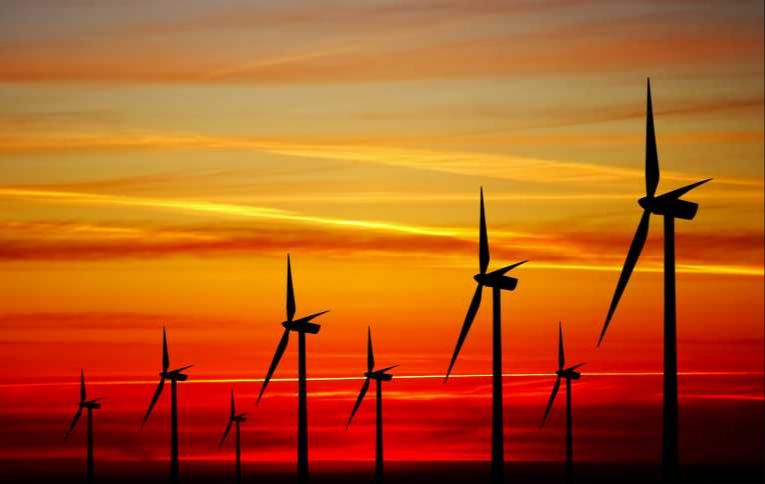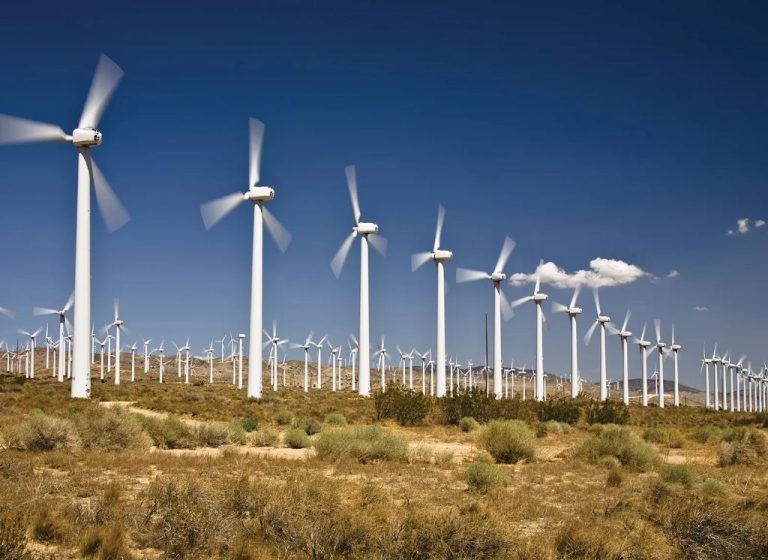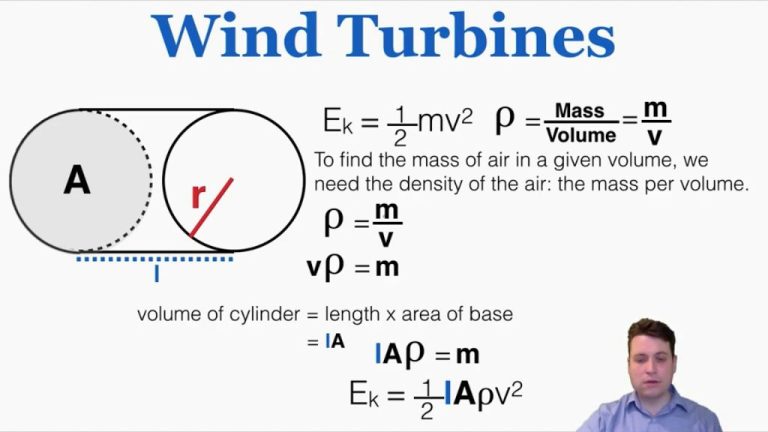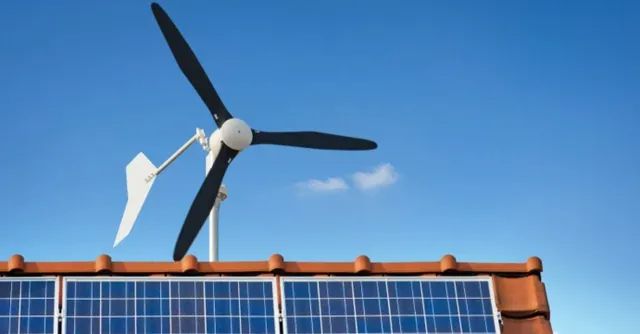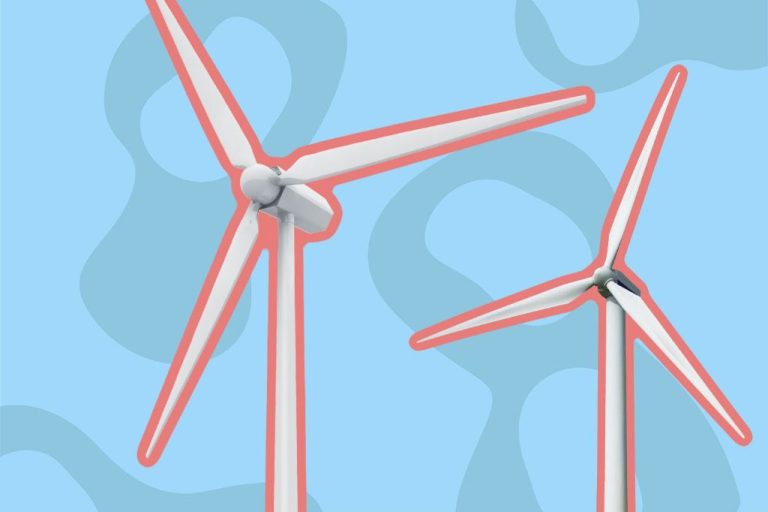Do All Wind Turbines Have Gearboxes?
Wind turbines are an increasingly important source of renewable energy around the world. But keeping these massive structures running smoothly is a major engineering challenge. One of the most vulnerable components is the gearbox, which converts the slow rotation of the turbine blades into high-speed rotation to generate electricity. According to the National Renewable Energy Laboratory’s Gearbox Reliability Database, gearbox failure accounts for nearly 35% of all wind turbine downtime, costing the industry billions in lost revenue and repairs every year.
With so much depending on their reliability, understanding the role of gearboxes in wind turbines is essential. This article will examine the pros and cons of gearbox and direct-drive turbine designs to shed light on one of the wind power industry’s most active technology battles.
What is a Gearbox?
A gearbox is a mechanical device used to increase torque or decrease speed in a powertrain system. The gearbox contains gears and gear trains that provide speed reduction and torque multiplication from a rotating power source to another device (Source 1). The interface for power transmission involves the source (input shaft) and receiving device (output shaft).
Inside the gearbox, gears mounted on shafts transfer rotational speed and torque between the input and output. The gearing allows the output speed and torque to be varied relative to the input speed. This allows the output device to operate at a different speed than the input device. Gearboxes enable machinery to generate appropriate torque for the intended application while operating the prime mover at an optimal speed (Source 2).
Why Do Wind Turbines Use Gearboxes?
A gearbox is an essential component in most wind turbines. The purpose of the gearbox is to increase the rotational speed of the rotor to the optimum speed required by the generator. The blades of a wind turbine rotate at a very low speed, typically 10-30 rpm. However, most generators require a higher rotational speed, usually 1000-1500 rpm, to effectively produce electricity. The gearbox acts as a transmission to convert the low speed rotation of the rotor to the high speed rotation required by the generator.
Without a gearbox, the generator would not spin fast enough to generate electricity. The gearbox increases the rotational speed by a factor of approximately 50-100 times. This speed-increasing function allows generators to operate at optimum efficiency to maximize power output. The precise gear ratio is tailored to match the rotor design with the generator specifications (Source: https://www.linkedin.com/advice/0/what-purpose-gearbox-wind-turbine-skills-renewable-energy-ak4kc).
In summary, a gearbox is a vital component that allows a wind turbine to convert the slow, high-torque rotation of the rotor into the faster rotation needed to generate electricity efficiently.
Types of Wind Turbines
There are two main types of wind turbine designs: horizontal axis and vertical axis.
Horizontal axis wind turbines (HAWT) have blades that rotate perpendicular to the ground, parallel to the wind direction. The most common design is the three-bladed horizontal axis turbine, which looks like an airplane propeller mounted on a tower. According to the U.S. Energy Information Administration, nearly all utility-scale turbines installed today are horizontal axis turbines.
Vertical axis wind turbines (VAWT) have blades that rotate parallel to the ground and perpendicular to the wind direction. There are two main types of vertical axis turbines: Darrieus and Savonius. Darrieus turbines have curved blades and use lift forces to spin. Savonius turbines have scooped blades and rely more on drag forces. Vertical axis turbines comprise only a small fraction of the wind turbine market today.
Wind Turbines With Gearboxes
The majority of modern utility-scale wind turbines use gearboxes to convert the slow rotation of the turbine blades into higher speed rotation required to generate electricity. Gearboxes allow the generator and other drive components to operate at optimal rotational speeds, while enabling the turbine blades to rotate at their optimal slower speeds. A gearbox steps up the rotational speed from about 10-60 rpm to 1000-1800 rpm.
Gearbox-equipped wind turbines are the conventional and the most common design. Gearbox technology has advanced significantly in recent years, enabling higher efficiency and reliability. Gearboxes are now designed to operate reliably for 20 years or more with minimal maintenance. Most major wind turbine manufacturers offer gearbox-based wind turbine models.
The nacelle of a gearbox wind turbine houses both the gearbox and generator. While gearboxes add complexity, weight, and potential failure points, the technology is well-understood and has proven reliable. Gearbox-based wind turbines can offer competitive pricing and performance, which helps explain their dominant market share.
Direct Drive Wind Turbines
Direct drive wind turbines operate without gearboxes and instead use a direct drivetrain design. The turbine rotor connects directly to the generator, eliminating the need for a gearbox to increase rotational speeds. According to the U.S. Department of Energy, this design emerged in the 2000s as a way to increase reliability and reduce maintenance costs associated with gearboxes.
Direct drive turbines utilize generators that can produce electricity at the low rotational speeds generated by the turbine rotor. Common direct drive generator types include permanent magnet synchronous generators, electrically excited synchronous generators, and induction generators. Permanent magnet synchronous generators tend to dominate the direct drive turbine market currently.
Without a gearbox, direct drive turbines avoid the costly gearbox repairs and replacements that have plagued some traditional geared turbines. Direct drive manufacturers also claim increased efficiency by eliminating gearbox losses. The turbines run smoother without gears and gear meshing losses.
However, direct drive turbines require larger diameter generators that can add weight to the nacelle. The heavier nacelles can potentially increase tower and foundation costs. According to DOE, the larger direct drive equipment results in transportation and assembly challenges as well.
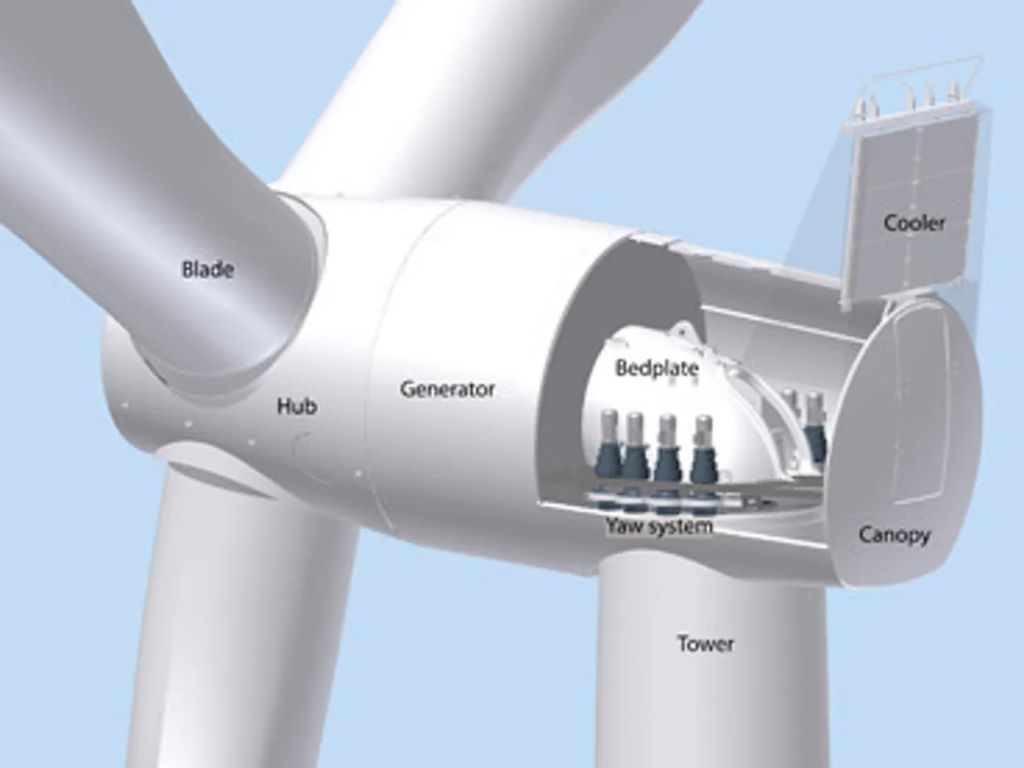
Pros and Cons of Each Design
When comparing gearbox wind turbines to direct drive wind turbines, there are pros and cons to both designs:
Gearbox Wind Turbines
Pros:
- Lower upfront costs – Gearboxes allow the use of smaller, standardized generators which are more cost effective (https://www.power-eng.com/renewables/direct-drive-vs-gearbox-progress-on-both-fronts/)
- Proven technology – Gearboxes have been used in wind turbines for decades and are a mature technology
Cons:
- Ongoing maintenance – Gearboxes have many moving parts and require regular maintenance and lubrication
- Mechanical losses – Gears can lose 3-5% of generated power through friction and slippage (https://www.energy.gov/eere/articles/advanced-wind-turbine-drivetrain-trends-and-opportunities)
Direct Drive Wind Turbines
Pros:
- Fewer moving parts and mechanical losses – No gearbox means fewer points of failure and friction losses (https://www.engineering.com/story/the-future-of-wind-turbines-comparing-direct-drive-and-gearbox)
- Higher efficiency – Direct drive can convert a greater portion of mechanical power into electrical power
Cons:
- Higher upfront costs – Direct drive generators are larger and use expensive magnets
- Newer technology – Direct drive is not as proven as gearbox technology yet
Market Share of Each Type
The market share between gearbox and direct drive wind turbines has shifted significantly over the past decade. In the early 2000s, the vast majority (around 90%) of wind turbines used gearboxes. However, adoption of direct drive turbines has risen steadily, reaching around 30% market share globally by 2020 according to industry estimates.
There are a few key factors driving increased adoption of direct drive turbines:
- Improvements in permanent magnet technology, making direct drive systems more efficient and cost-effective.
- Desire to reduce maintenance costs by eliminating the gearbox, which is one of the more failure-prone components.
- Ability to scale direct drive turbines to very large sizes (10MW+) for offshore wind farms.
Major wind turbine manufacturers such as Siemens Gamesa, GE, Vestas, and Enercon all now offer direct drive models alongside geared turbines. The market is expected to continue shifting towards direct drive, with some projections estimating they could account for 50% or more of annual installations by 2030.
Future Outlook
The future outlook for gearboxes in wind turbines is a continued shift towards direct drive designs. According to research, the global market share for direct drive wind turbines is predicted to grow from 27% in 2020 to over 50% by 2030 (Energy5). There are several reasons driving this trend:
First, direct drive turbines are more reliable and require less maintenance than geared turbines. Without a gearbox, there are fewer mechanical components to fail. Direct drive turbines have maintenance intervals measured in years rather than months for geared turbines.
Second, direct drive turbines perform better than geared turbines at the higher power ratings required for modern large-scale wind farms. Gearboxes add stages that sap efficiency at higher power levels. Going gearless improves overall efficiency.
Finally, improvements in permanent magnet technology have made direct drive turbines more cost competitive. Powerful neodymium magnets can deliver the same power from a direct drive generator that previously required a multi-stage gearbox (Engineering.com).
Based on these trends, most industry analysts predict direct drive turbines will dominate the global market within the next decade as wind farms continue to grow in scale and power output.
Conclusion
In summary, most modern utility-scale wind turbines utilize gearboxes to increase low rotational speeds to the high speeds required by the electrical generator. Gearboxes act as a mechanical multiplier and enable wind turbines to operate efficiently at lower wind speeds. However, gearbox issues like high maintenance costs and reliability problems have led some manufacturers to develop direct drive turbines without gearboxes. Direct drive turbines are more reliable but also larger, heavier, and more expensive. Overall, geared turbines still dominate the market but the share of gearless direct drive turbines is increasing. Going forward, innovations in materials, designs, and power electronics will likely improve the performance of both types of turbines.
To conclude, wind turbines equipped with gearboxes remain the most common design today but direct drive turbines are growing in popularity. There are merits to both models and ongoing advancements may reshape the competitive landscape. In the end, the optimum turbine configuration depends on location, climate, and other factors. But whether employing a gearbox or not, wind power will continue expanding as a clean, renewable energy source for generations to come.

